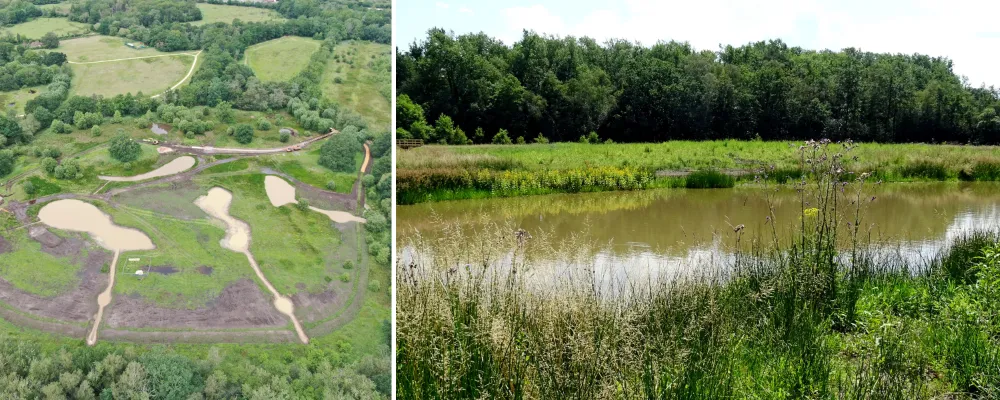Ecosulis, in partnership with Hart District Council, is creating an enhanced wetland and woodland habitat at Whitewater Meadows Country Park in Hook (What3Words: alien.acids.shortcuts)
Whitewater Meadows Country Park is named for the river bordering the east and north of the site, a chalk stream which are internationally rare. The UK have the vast majority, but all are under threat.
The northern field of the country park was once a flood plain leading to the river, with a variety of permanent and seasonal wetland features such as ponds, scrapes, additional channels of the river and seasonal springs and flow paths. These wetlands supported a huge range of biodiversity with a wide variety of plants and animals using the diverse range of habitats, from tree covered hills down to boggy wetland, all of which have since been lost.
We explored ways to fund a project which could restore some of this lost wetland functionality to the country park. We settled on creating a Biodiversity Net Gain site to deliver biodiversity uplift and to allow the project to become self-funded across its lifetime. Modelling was undertaken to inform the design of the wetland features that could be restored, and additional tree and hedgerow planting across the site was proposed to add a mix of habitats.
The features below have all been or will be implemented on site, creating a much more varied series of habitats across the site.
Click through to find out what features we're adding, and how they'll achieve our aims!

